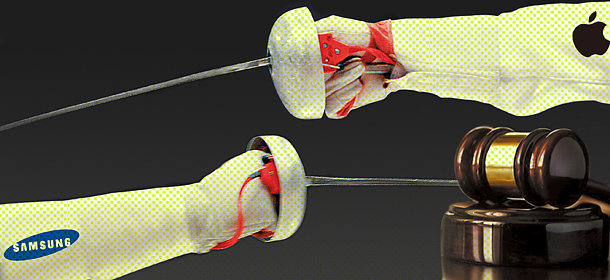The court’s message for Samsung
Published: 07 Dec. 2016, 19:33

The case is the latest in a string of decisions over the past several years in which the Supreme Court has rejected rulings by the U.S. Court of Appeals for the Federal Circuit, which specializes in patent law, among other things.
The Federal Circuit’s opinion was based on what was considered a well-established principle of damages in patent law: When one manufacturer infringes the patent of another, damages are to be calculated based on the profits made by the sale of the entire offending article. The principle was based in the statutory language of the Patent Act, which specifies that damages derive from profits created by the sale of an “article of manufacture.”
The Supreme Court upended the traditional interpretation of the phrase “article of manufacture.” In a unanimous opinion written by Justice Sonia Sotomayor, it held that the words, “article of manufacture” don’t necessarily refer to the whole object that is available for sale.
Rather, the court said, “an article of manufacture ... is simply a thing made by hand or machine.” As a result, the term “is broad enough to encompass both a product sold to a consumer as well as a component of that product.”
Relying on text alone is a trick the court likes to use to avoid considering issues of legal policy. In this case, that approach garnered unanimity at the expense of logical clarity. Sure, the words “article of manufacture” could be interpreted narrowly to refer to a single object like a smartphone or more broadly to refer to its components. But the important question is which interpretation the courts ought to adopt. It’s all fine and dandy for Sotomayor to write that “the text resolves this case.” But it doesn’t — not really.
At bottom is a serious policy question: whether the traditional test should be seen as outmoded in the area of modern information technology. Samsung urged the Federal Circuit to hold that new conditions required a new test. By rejecting that argument, the Federal Circuit essentially took the position that there is nothing essentially different about selling a patent-infringing smartphone and selling a patent-infringing cotton gin. The logic of this position is that integrated manufacturing is hardly a new development.
If the Supreme Court really wanted to reject the Federal Circuit’s position, it should have offered substantive reasons about why the old rule is no longer good enough. For example, it could have said that the ease of incorporating features into technology using modern manufacturing methods renders the old rule obsolete. Instead the court avoided giving any explanation.
What happens next is that the Federal Circuit will have to consider and decide the case once again — this time with the objective of creating a rule to explain when damages should depend upon the whole product sold to consumers and when damages should rely upon individual components.
If the appeals court is feeling recalcitrant and frustrated with the Supreme Court, which isn’t impossible, the Federal Circuit could hold that certain products are inherently integrated, and that smartphones are an example. Then it could award Apple the same damages it got last time.
If, however, the Federal Circuit wants to read the tea leaves of the justices’ terse opinion, it might develop a detailed test for how to calculate damages, and reduce the damages that Samsung had to pay Apple. The Office of the Solicitor General offered the Supreme Court a possible test. It said the courts should consider the totality of the circumstances, emphasizing (1) the scope of the design claimed in the patent, (2) the relative prominence of that design in the product as a whole, (3) whether the design is conceptually distinct from the whole product, and (4) the physical relationship between the patented design and the rest of the product.
Applying that test, rounded edges and apps displayed on screen might not be all that essential.
It could be argued that the Supreme Court, which doesn’t know much about patent law, was wise to ask the Federal Circuit, which does, to develop a new test, rather than doing it on its own. That could turn out to be true — if and only if the Supreme Court doesn’t subsequently reject whatever test the Federal Circuit develops.
*The author is a Bloomberg View columnist.
Noah Feldman










with the Korea JoongAng Daily
To write comments, please log in to one of the accounts.
Standards Board Policy (0/250자)